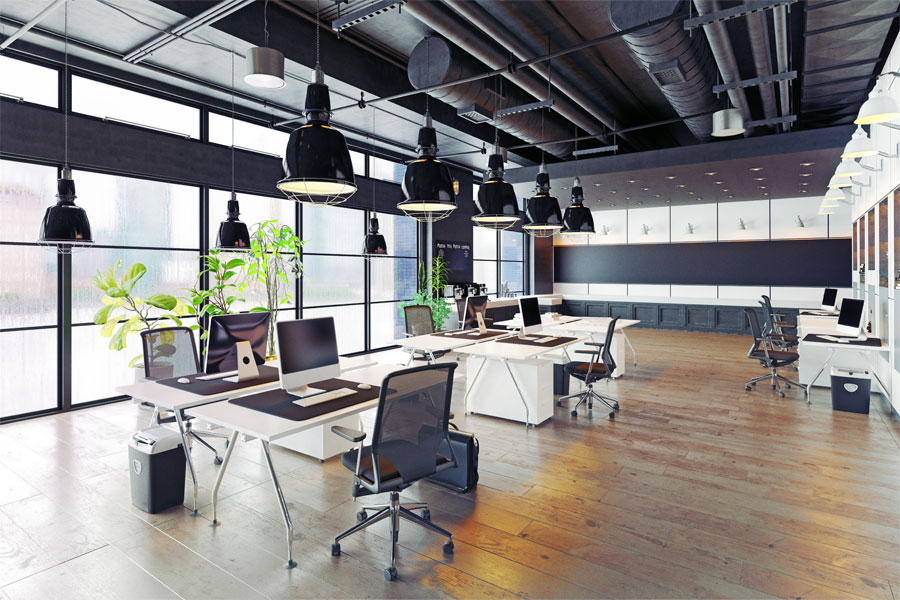In the world of commercial interior design, few spaces hold as much importance as hotel lobbies. These areas are not just transient places for guests; they serve as the first impressions and social hubs of the establishment. Hotel lobbies are where design, functionality, and atmosphere converge to create memorable experiences. This blog delves into the art of transforming hotel lobbies and other commercial spaces into engaging first impressions and gathering spaces.
Hotel Interior Design: Shaping First Impressions
A hotel’s lobby is its face to the world. Guests and visitors step into this space and form immediate judgments about the establishment. The role of commercial interior design is pivotal in ensuring that these first impressions are exceptional. Commercial interior designers understand the importance of aesthetics and functionality. They integrate elements like lighting, color schemes, furniture, and layout to create an inviting ambiance that sets the tone for the entire stay. With an eye for detail, they infuse the lobby with the brand’s identity and a warm, welcoming atmosphere.
The Magic of Gathering Spaces
Hotel lobbies have evolved beyond mere check-in counters and waiting areas. They now double as dynamic gathering spaces. This transformation is a result of the changing expectations of modern travellers who seek more than just a place to sleep. Restaurants and cafes within hotel lobbies are becoming popular hangout spots for both guests and locals. The integration of comfortable seating, free Wi-Fi, and stylish decor makes these spaces ideal for meetings, work, or socializing. Commercial interior design plays a crucial role in this shift by making these spaces functional and appealing.
Restaurant Interior Design: A Culinary Experience
Restaurants within hotels are more than just dining places. They are an integral part of the guest experience. This is where restaurant interior design comes into play. By blending aesthetics with functionality, designers create spaces that enhance the culinary journey. From the choice of furniture to the layout and lighting, every aspect is meticulously planned. The goal is to create an environment that complements the menu and encourages patrons to return. Whether it’s a fine dining establishment or a casual cafe, commercial interior design ensures that the restaurant space aligns with the hotel’s overall theme.
Office Interior Design: The Work and Connect Hub
Hotels are no longer just for leisure travellers. The inclusion of co-working spaces and meeting rooms within hotel lobbies caters to business travellers as well. Office interior design principles are crucial here to ensure that these spaces are productive, comfortable, and conducive to work. Ergonomic furniture, soundproofing, and high-speed internet connectivity are essential elements of these office spaces. They provide a seamless experience for guests who need to work or host meetings while on the go.
The Balance of Aesthetics and Functionality
In commercial interior design, finding the balance between aesthetics and functionality is the key to success. A visually stunning lobby or restaurant should also be comfortable, easy to navigate, and able to withstand the wear and tear of daily use. Designers need to consider factors like traffic flow, accessibility, and the durability of materials. A beautiful lobby is of little use if it doesn’t stand up to the demands of a bustling hotel.
Elevating Guest Experiences
In the world of commercial interior design, hotel lobbies serve as prime examples of spaces that go beyond their traditional roles. They are the gateways to memorable guest experiences and are essential in making hotels stand out in a competitive industry. From restaurant interior design to office spaces, each component plays a vital part in creating an inviting and engaging atmosphere. Commercial interior designers are the architects of these experiences, weaving together form and function to craft spaces that leave lasting impressions. To excel in the field of commercial interior design, one must understand the ever-evolving needs and desires of guests. Hotel lobbies, in particular, are the epitome of this understanding, offering a glimpse into the future of interior design. In conclusion, the art of transforming hotel lobbies into social hubs is an ongoing journey, where the interplay of aesthetics, functionality, and innovation takes Centre stage. Commercial interior design is the driving force behind these transformations, and the results are a testament to its power in shaping the hospitality industry’s future.





